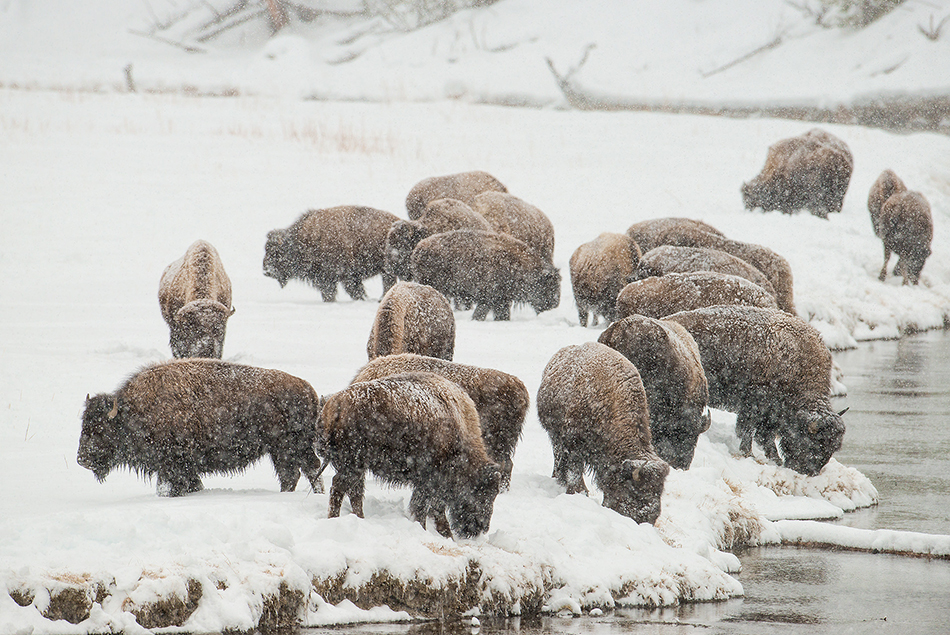
Yellowstone National Park, Wy.
Colorado will just not transition into spring. Right now we have a full on blizzard outside the office window, 12 inches of snow and still falling heavy. But I always look at bad weather as good weather when it comes to photography. Unique images are often created in unusual weather. We teach a lot of workshops where snow is falling constantly, most recently our Japan winter workshop this January. And when it comes to photographing in the snow, shutter speed makes all the difference. The question becomes do you want blurry snowflakes and a misty feeling to your shot…or diamond snow flakes and more clarity in the image. I tend to gravitate towards tack sharp snow. But if I want the image to really convey a bad blizzard, I may choose blurry snow flake streaks in the air. It all comes down to shutter speed. Below I have given some examples.

Here is the first shot at 1/30. Pretty much any shutter speed below 1/30 is going to produce blurry flakes, unless the snow is barely falling out of the sky.
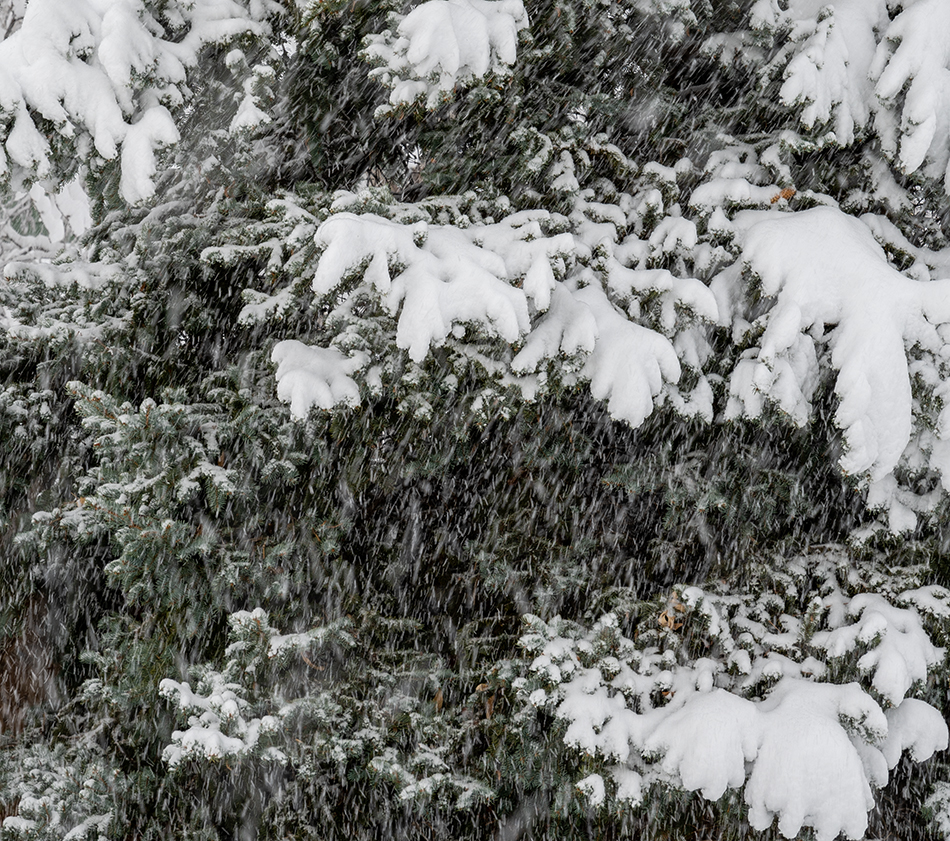
Here is 1/60 shutter speed.
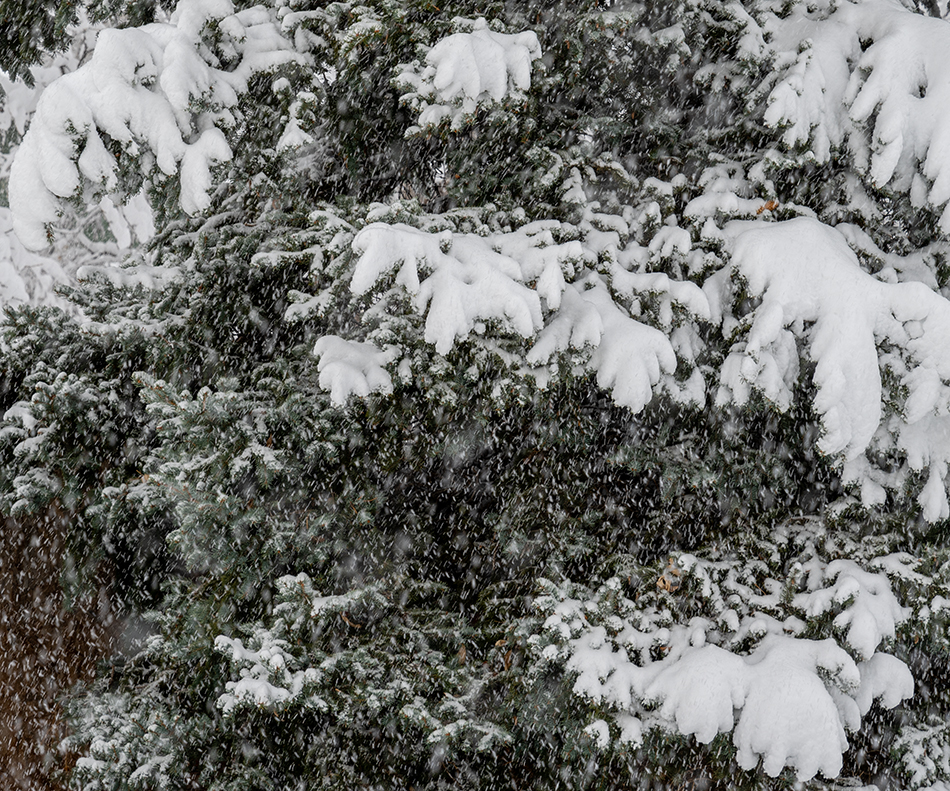
Here is 1/125 shutter speed.
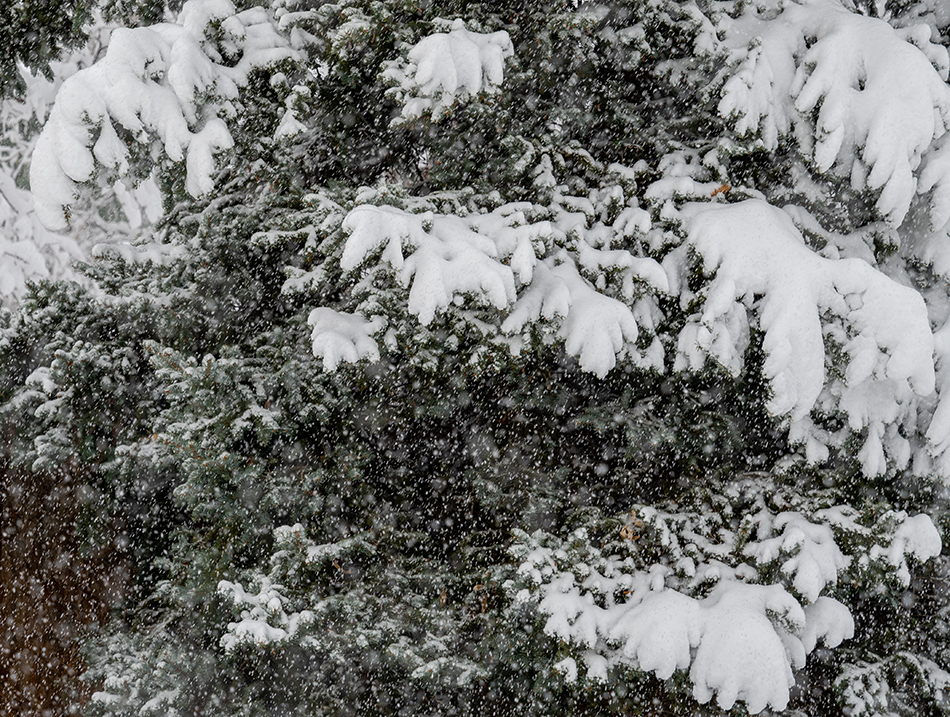
And 1/250 of a second…notice how the flakes are starting to have that diamond appearance.
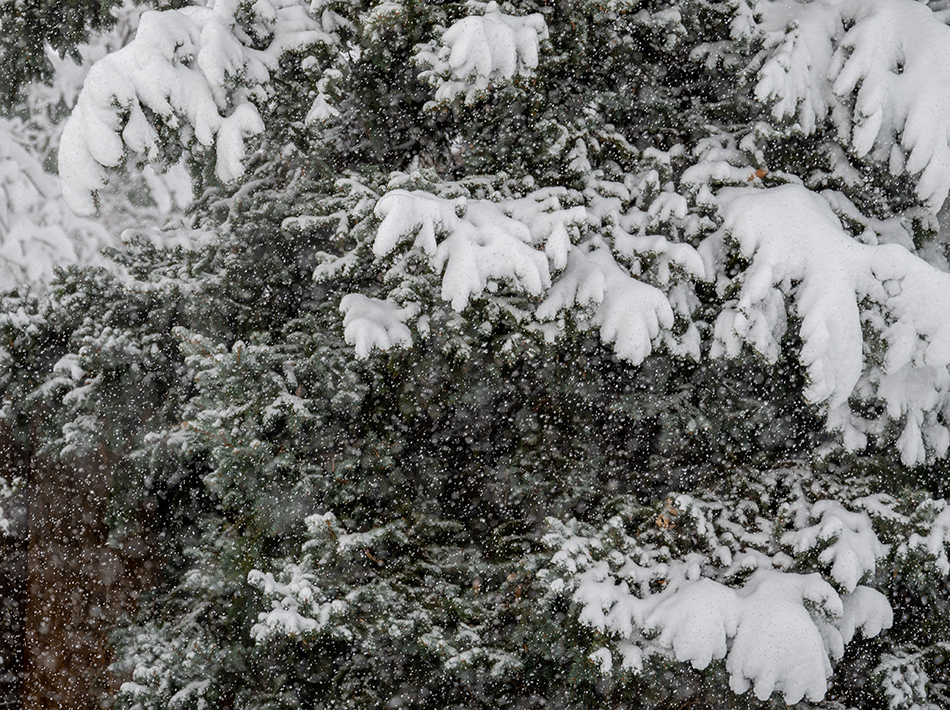
And at 1/500 of second

At 1/1000 the snow is really frozen in the air.

And any shutter speeds faster than 1/2000 and you know your snow will be sharp except in the worst blizzard, which you most likely won’t be out in taking pictures.
You may find the challenge using fast shutter speeds in a blizzard is the low light. Dial up your ISO to enable getting faster shutter speeds. And most importantly, think about what effect best supports what you are trying to capture in your image. The bison at the top of the this post was taken in Yellowstone in a heavy blizzard. The snow was falling so hard that slow shutter speeds rendered the snow as a blurry misty overlay to the shot. I needed the bison to be visible so the viewer could feel what they were experiencing, so I chose a fast shutter speed.